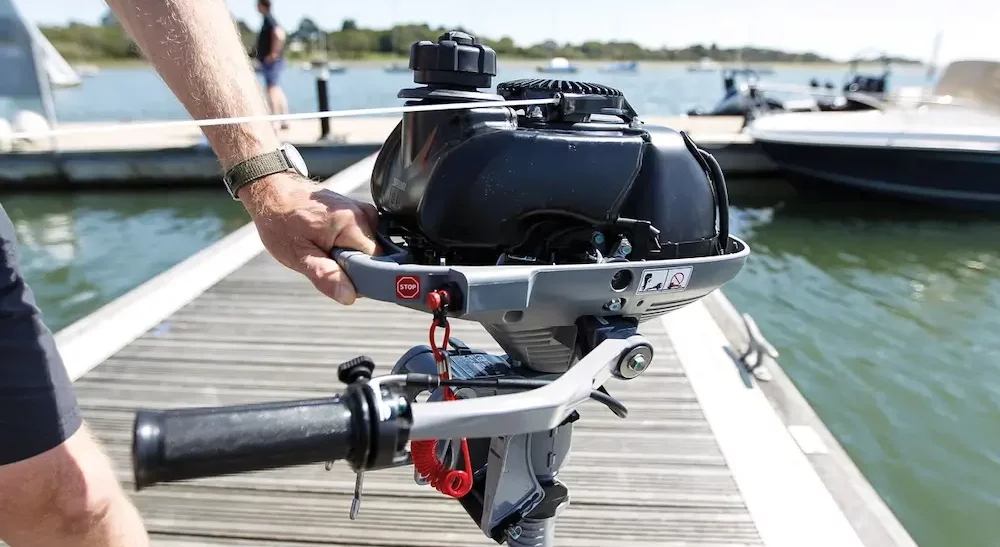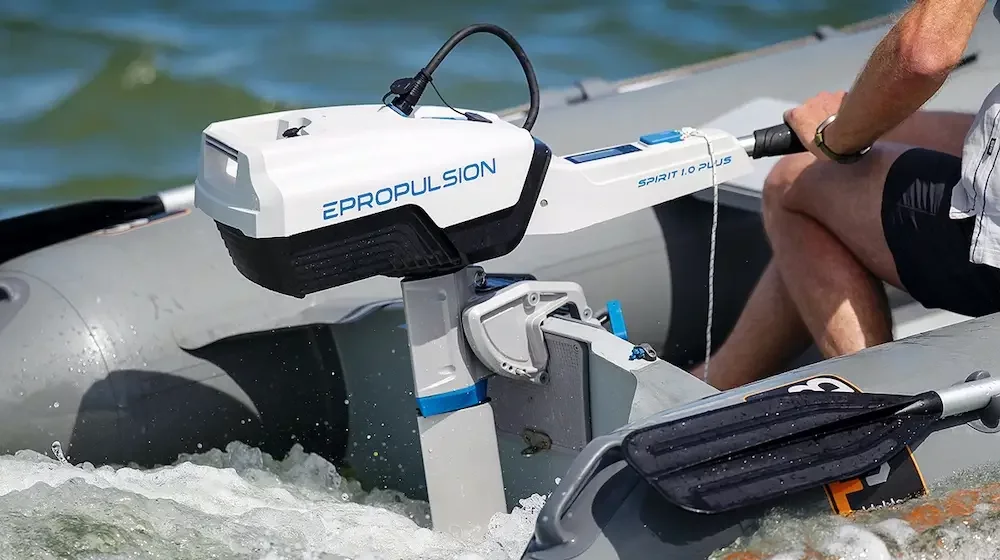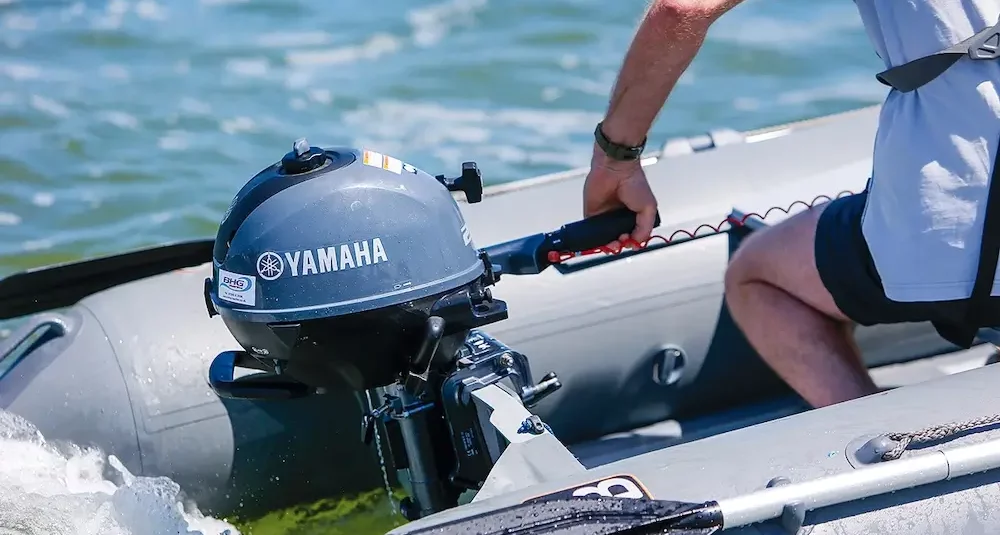If your outboard motor has been sitting for a while, there are a few things you need to do before you try to start it. In this blog post, we will walk you through the process of how to start an outboard motor that has been sitting.
We will cover everything from checking the oil level to priming the carburetor. Follow these steps, and your engine should start up like new.
What is An Outboard Motor?

An outboard motor is a type of engine that is used to powerboats. It is attached to the back of the boat, and it uses a propeller to move the vessel through the water. Outboard motors come in two main types: gasoline and electric.
Gasoline outboard motors are more common, and they typically have more power than electric motors. However, they also require more maintenance, and they can be dangerous if not handled properly.
Electric motors are less powerful but are much easier to maintain. They are also a lot quieter than gasoline engines.
How to Start an Outboard Motor That Has Been Sitting
If you have a boat with an outboard motor, it is important to know how to start it up properly. Otherwise, you may end up damaging the engine. Let’s get started:
Step 1: Check the Oil Level
One of the most important things you need to do before starting an outboard motor is checked the oil level. If the engine is low on oil, it can damage the internal components and cause serious problems.
To check the oil level, remove the cap from the top of the engine and look inside. You should see either a dipstick or a sight glass.
If you see oil in the sight glass, the level is good. If there is no oil in the sight glass, add some until the level reaches the top of the hole.
Step 2: Prime the Carburetor
Before you start the engine, you need to prime the carburetor. This will ensure that enough fuel is flowing to the engine.
To prime the carburetor, locate the primer bulb on the engine. It is typically a black rubber bulb located on the top of the carburetor. Squeeze and release the primer bulb several times until it feels firm.
Step 3: Start the Engine
Now that you have checked the oil level and primed the carburetor, it’s time to start the engine.
To start an outboard motor, you need to set it in neutral. Then, turn the key switch to ON and push the starter button. The engine should start up after a few seconds. If it doesn’t, try again.
If the engine starts but then stalls, release the starter button and give it a few seconds to cool down. Then, try starting it again.
If the engine still doesn’t start, there may be something wrong. In this case, you will need to take it to a mechanic for repair.
Outboard Motor Maintenance

If you have been storing your outboard motor for an extended period, there are a few things you need to do before attempting to start it. Follow these simple steps to get your engine running like new again:
- Check the fuel level in the tank. If necessary, add fresh fuel to the tank.
- Ensure the kill switch is in the “on” position.
- Open the throttle all the way.
- Turn on the ignition by rotating the key to the right.
- Check for oil leaks around the engine. If you spot any, stop and address them before continuing.
- Pull out the choke lever and set it in the midway position.
- Crank the engine by turning the key to the right. Do not hold the key in place; allow it to return to the “off” position after each crank.
If everything goes according to plan, you should be able to start your outboard motor in a few easy steps. However, if you encounter any problems, stop and troubleshoot before continuing.
With a little bit of patience and some basic maintenance, you can have your engine up and running in no time.
Which Motor Type Best For You?
It is important to know the different types of outboard motors available on the market before purchasing. There are two main types: gas and electric.
Electric motors tend to be more popular because they are quieter and easier to use. However, gas motors offer more power and can be used in a wider variety of boats.
If you are still unsure which type of motor is best for you, consider how often you use the boat.
If you plan on using it frequently, then a gas motor may be a better option. On the other hand, if you only plan to use it occasionally, an electric motor will likely suffice.
No matter which type of outboard motor you choose, it is important to read the owner’s manual thoroughly before use. This will ensure that you are familiar with starting the engine and how to operate it safely.
If your outboard motor has been sitting unused for an extended period, there are a few things you should do before attempting to start it.
The first is to check the oil level and ensure it is correct. If not, add the appropriate amount of oil to the engine.
Advantages of Outboard Motor
Outboard motors provide many advantages over traditional inboard motors. Some of these advantages include:
- Reduced weight and size – Outboard motors are much smaller and lighter than inboard motors, making them easier to transport and store. This is especially important for small boats that lack the space for a large motor.
- Increased maneuverability – Outboard motors can be easily turned to change the direction of the boat, allowing for greater maneuverability.
- Increased speed – Outboard motors can often generate more power than inboard motors, resulting in increased speed.
- Lower cost – Outboard motors are typically less expensive than inboard motors.
If you are looking for a more efficient and powerful way to power your boat, then an outboard motor may be the right choice for you.
FAQs About Start an Outboard Motor

Why won’t my outboard motor start?
A few things could be causing your outboard motor not to start. One possibility is that the battery is dead or not charged properly.
Another possibility is that something is blocking the air intake, such as leaves or debris. Finally, it could also be that the ignition system is not working properly.
What should I do if my outboard motor starts but then dies?
If your outboard motor starts but then dies, you should first check the battery to ensure it is still charged.
Charging it up using a charger specifically designed for marine batteries is not. Instead, try turning on the ignition again once the battery is charged.
If that does not work, you can try spraying a small amount of starting fluid into the air intake.
Finally, you can manually turn the prop shaft using a socket wrench if all else fails. Be careful when doing this, as it can be dangerous if done incorrectly.
What is the best way to store an outboard motor?
The best way to store an outboard motor is by disconnecting the battery and cleaning it off. You should also cover the motor with a waterproof tarp or storage cover.
Finally, make sure to remove any fuel from the tank before storing it. This will help prevent any corrosion or damage to the motor.
Conclusion
So, there you have it – your guide to starting an outboard motor that’s been sitting. We hope you found this information helpful and that you’re now ready to get out on the open water.
If you have any questions or need help getting started, please reach out to us. We’re always happy to help our fellow boaters stay safe and enjoy a great day on the lake. So have a great time out there.

